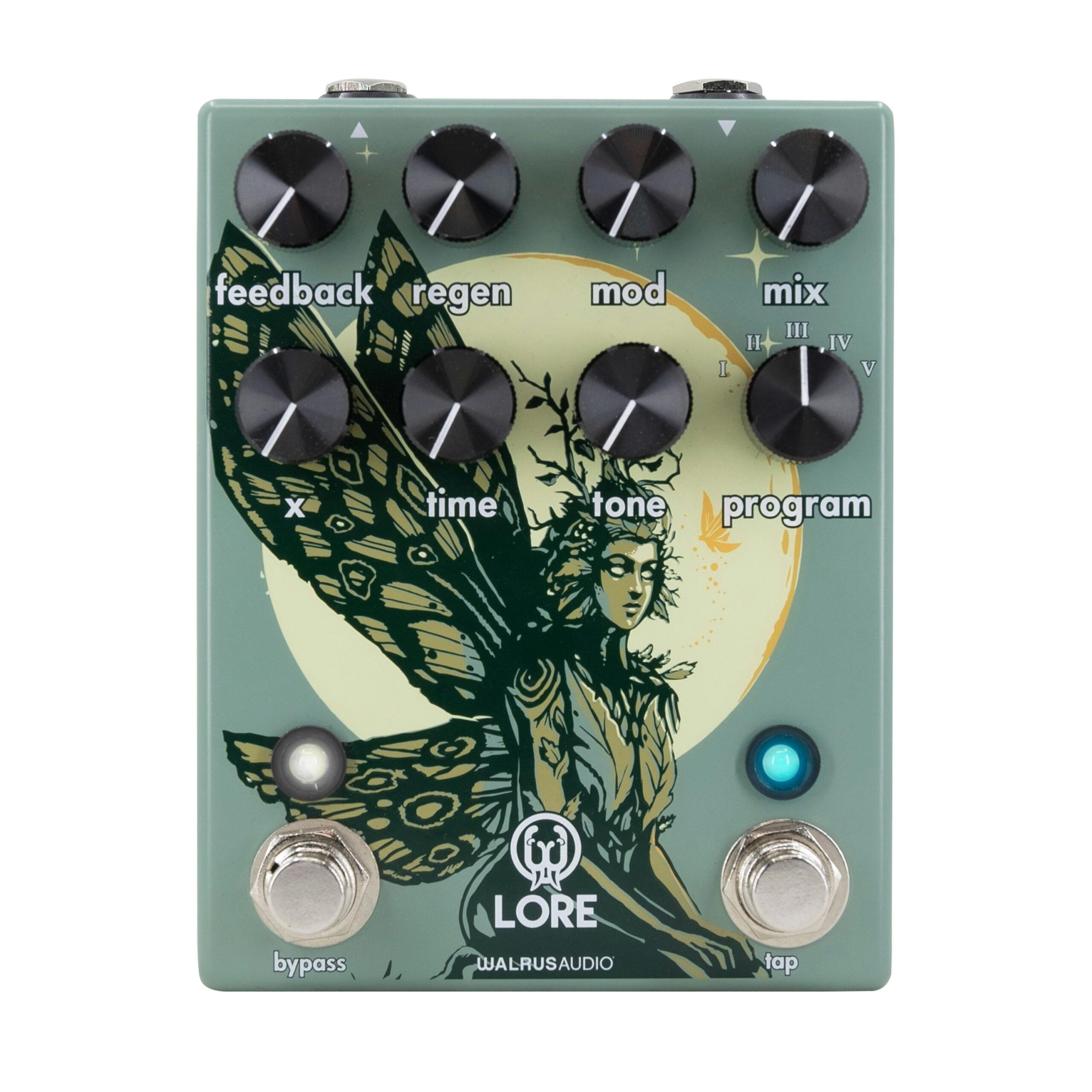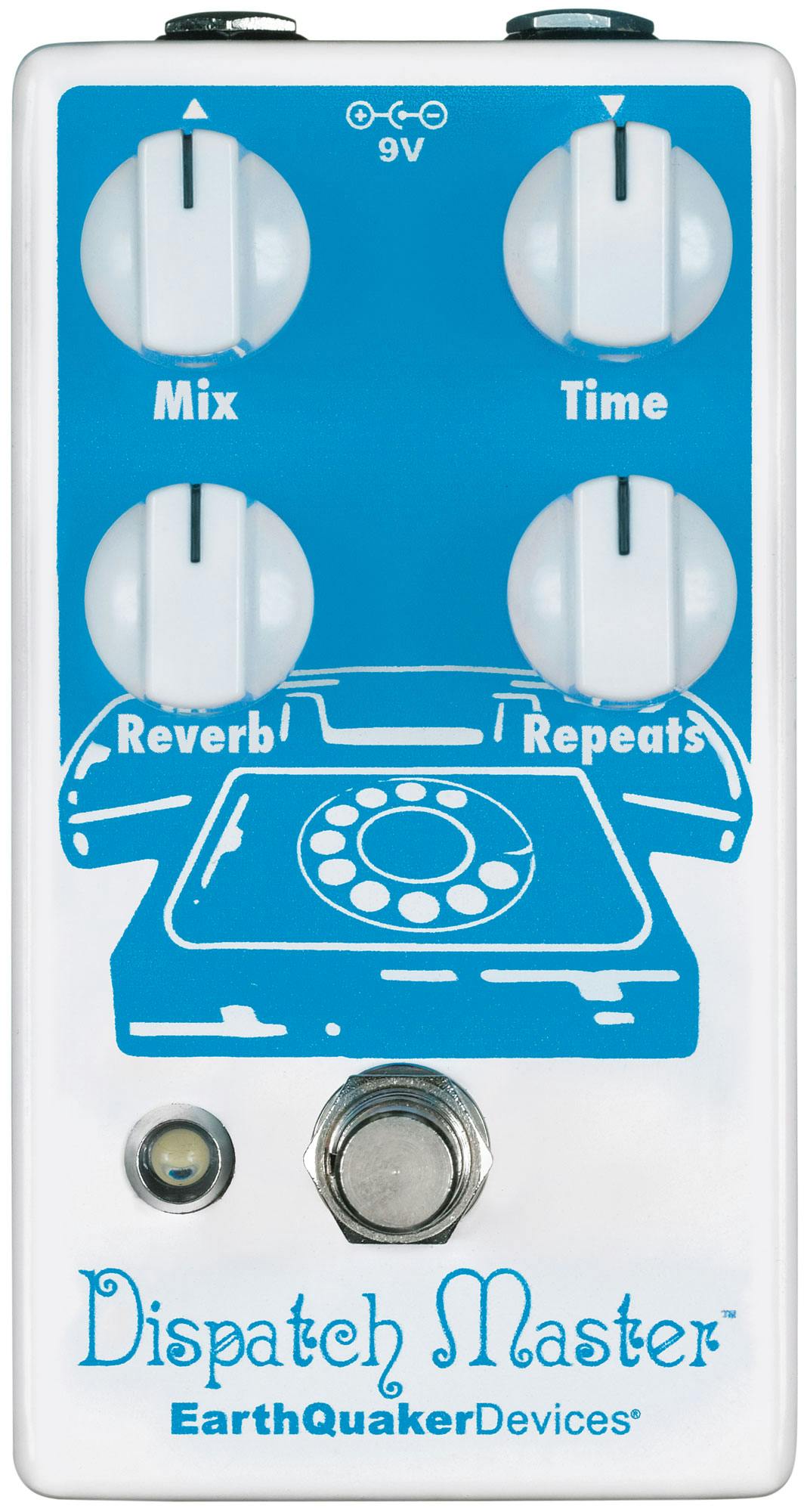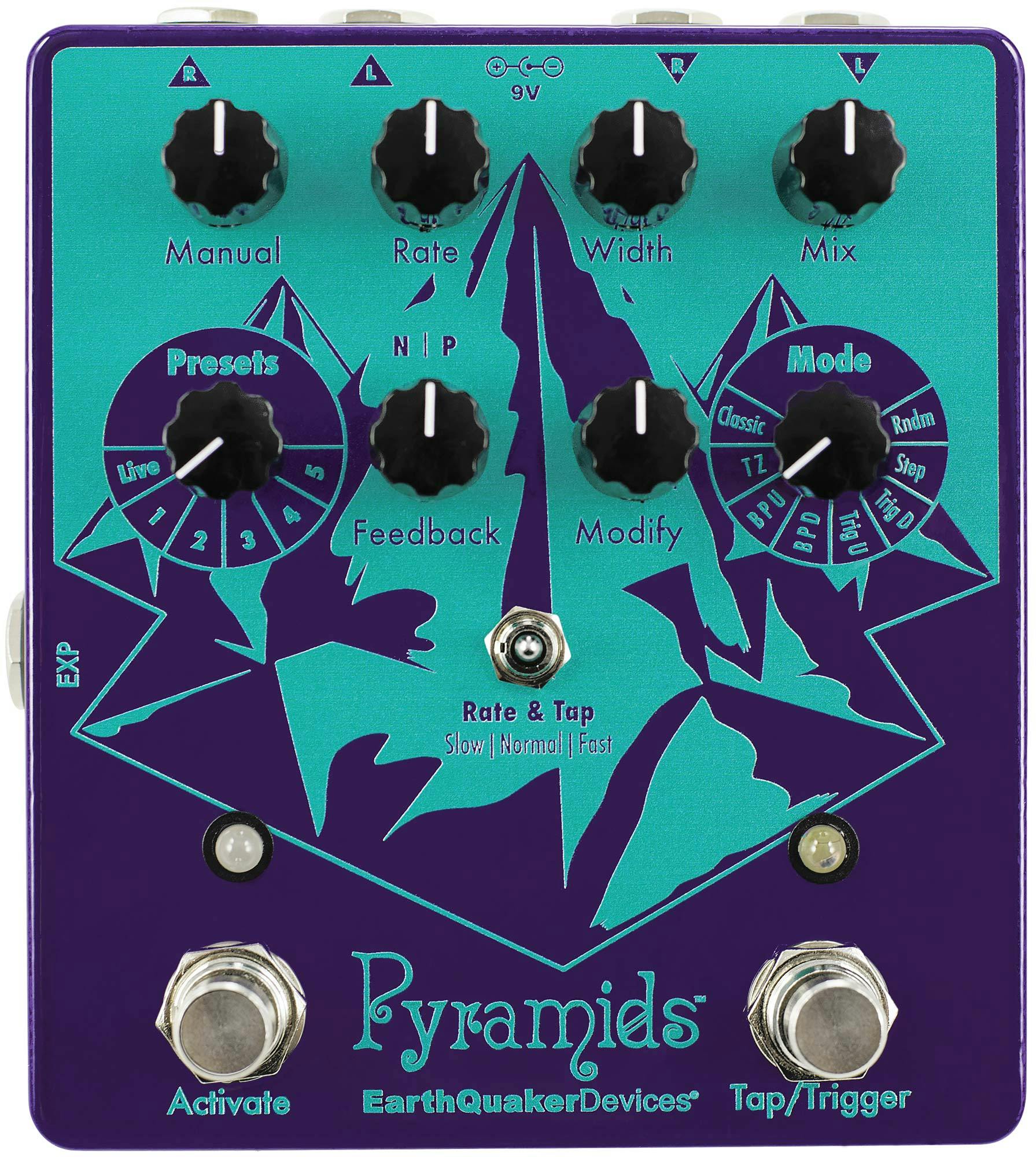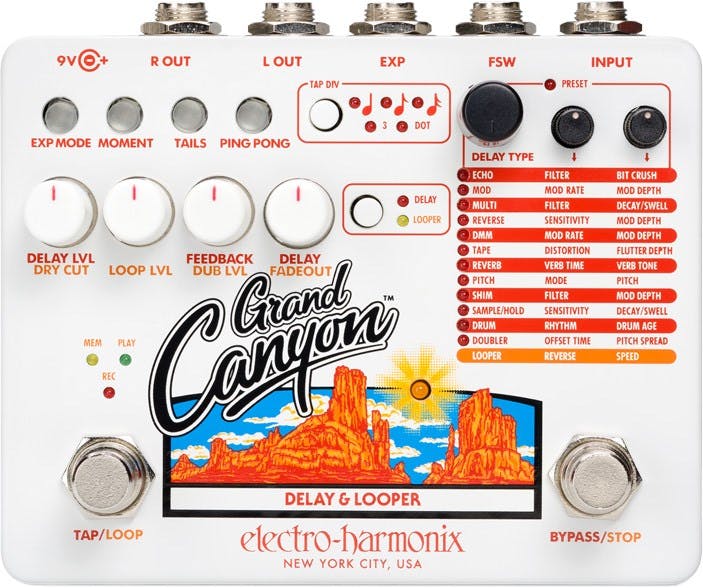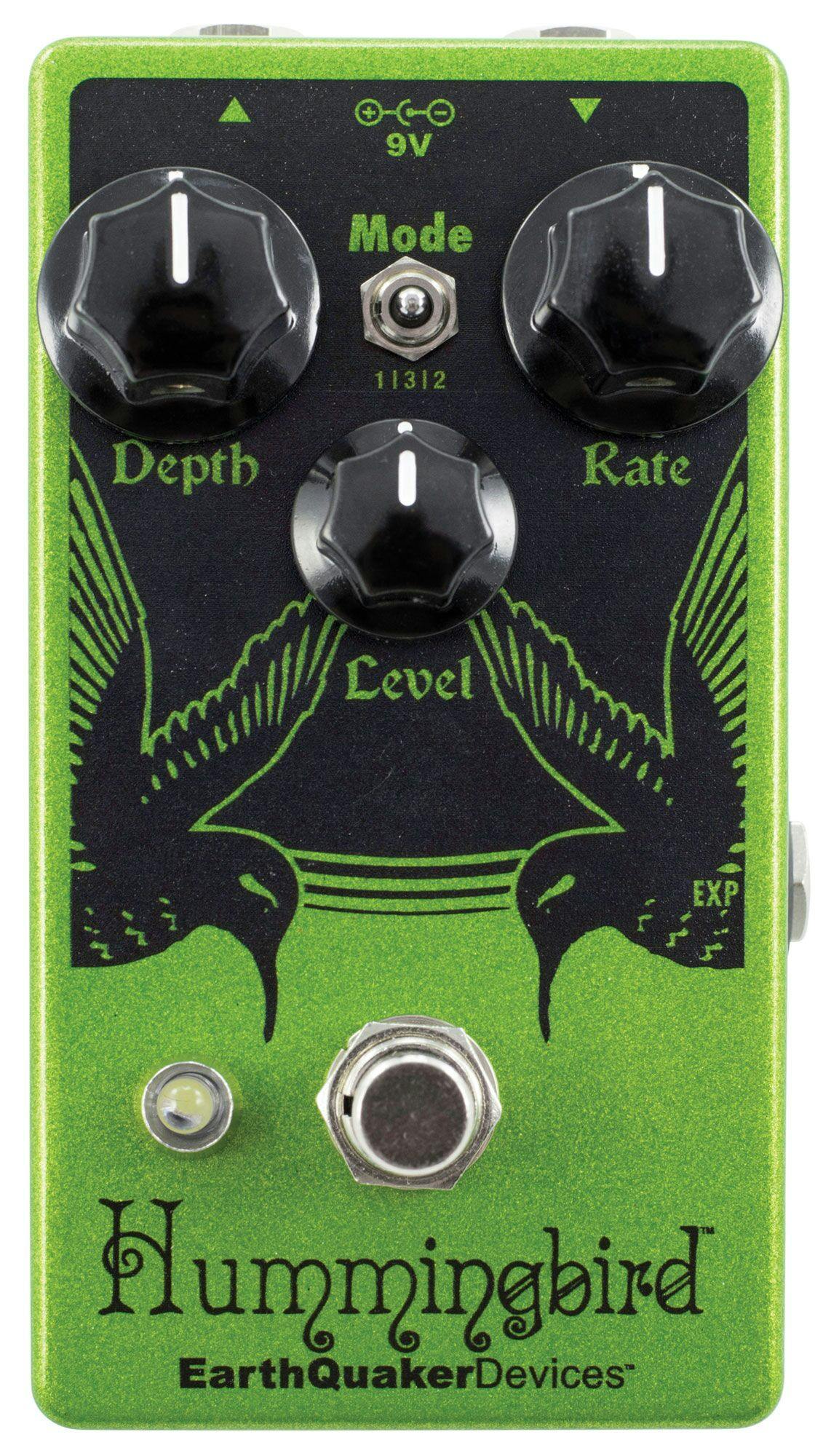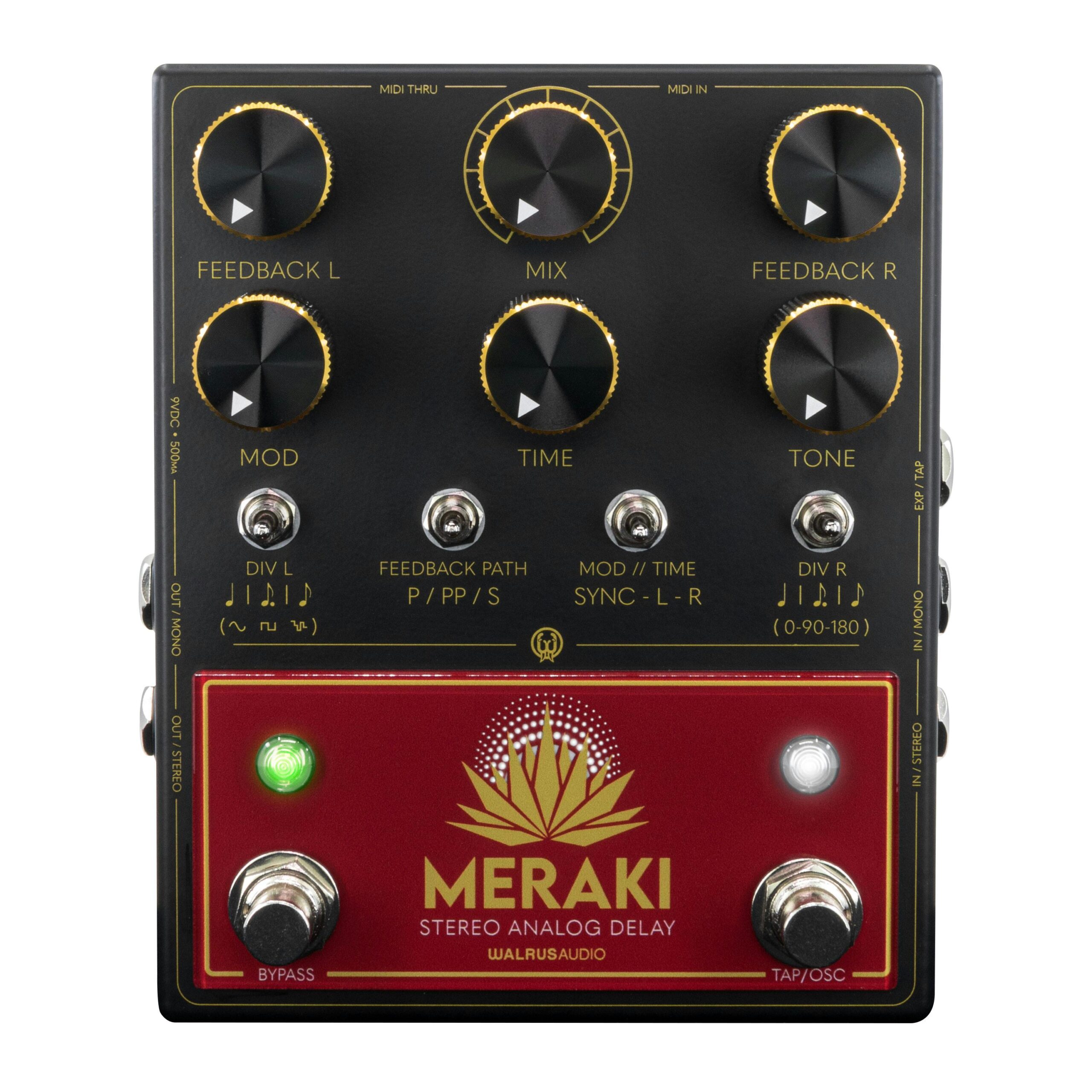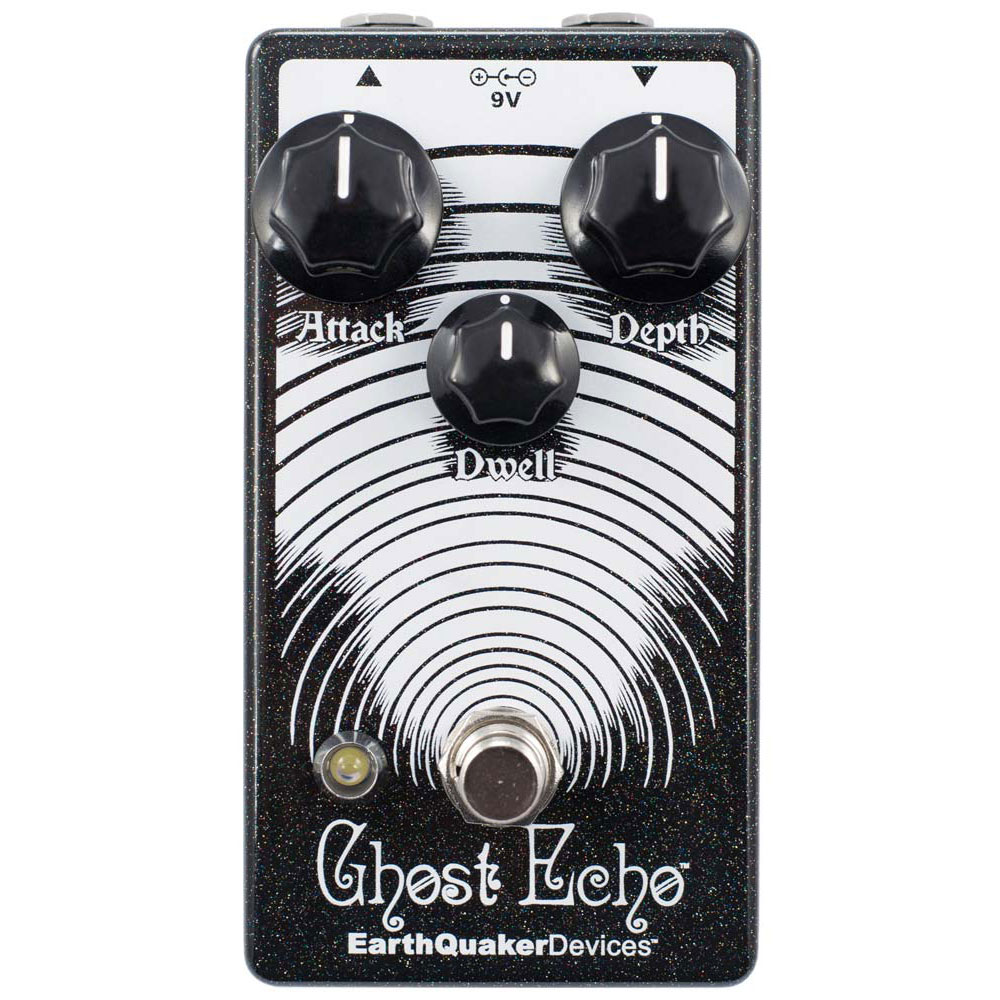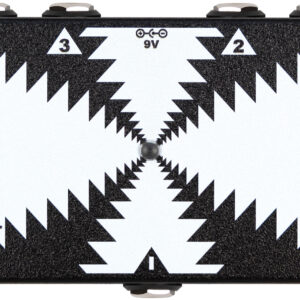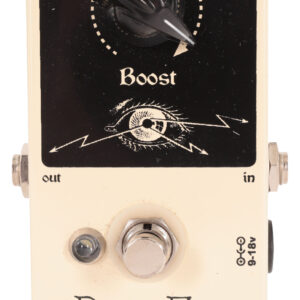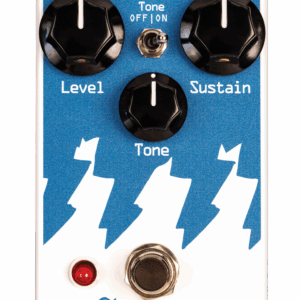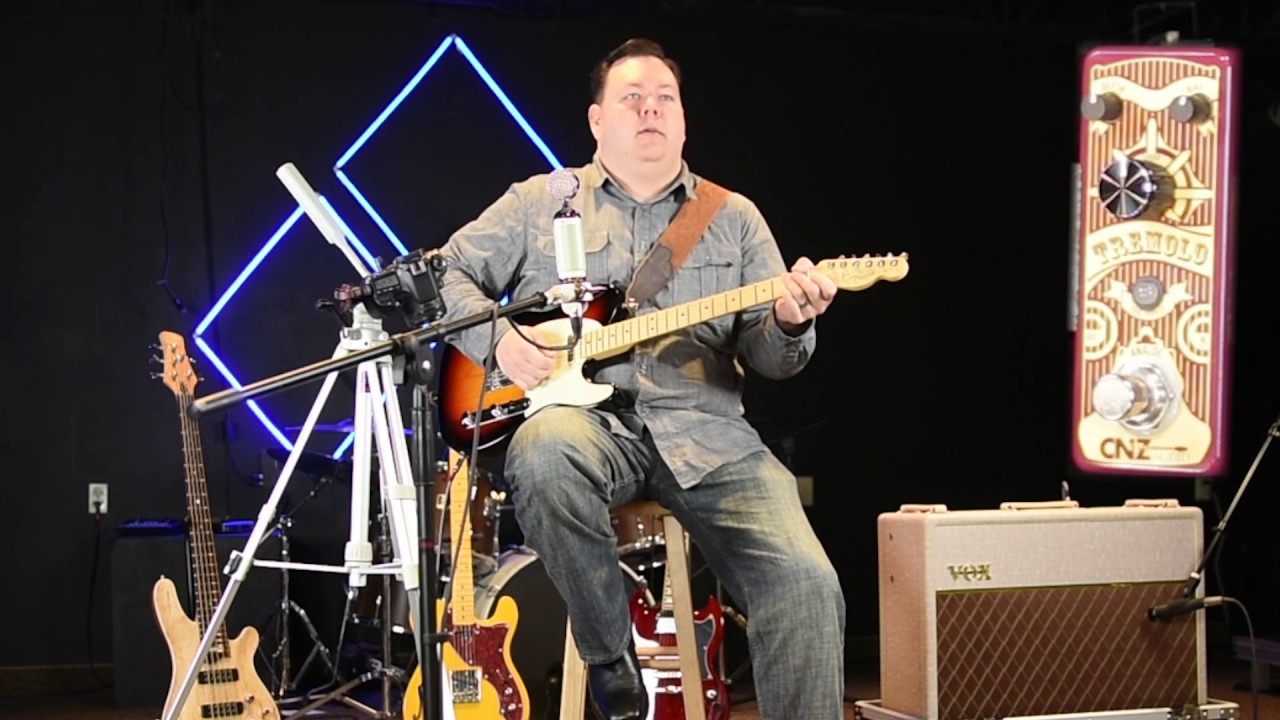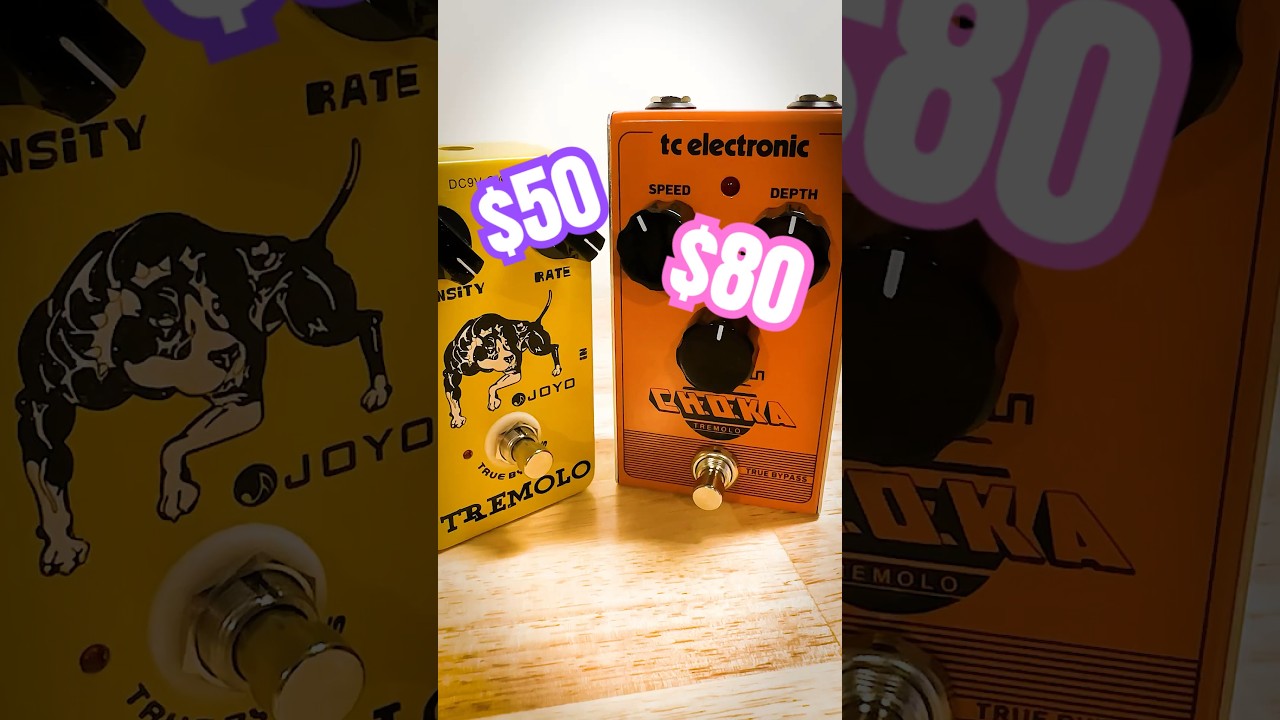Description
The EarthQuaker Devices Avalanche Run V2 Stereo Reverb and Delay Pedal is currently retailing at £399 and it is in stock. Available to be delivered to you by post direct (some charge may apply).The team at Just Pedals think that EarthQuaker Devices nailed it with the EarthQuaker Devices Avalanche Run V2 Stereo Reverb and Delay Pedal.
The Avalanche V2 transcends the delay category. In typical EarthQuaker fashion, it offers a wealth of controls and parameters that can be tweaked and interwoven to create complex and abstract textures, the likes of which are hard to find anywhere else.
Offering three distinct modes – Norma, Reverse and Swell – it boasts improved stereo imaging and a more complex algorithm than its predecessor, tap tempo, expression input and much more. This really is the peak (excuse the pun) of digital & abstract delay effects!
Key Features:
- Normal Mode – straight up delay and reverb, with up to 2 seconds of delay time to play with.
- Reverse Mode – as the name suggests, the delay signal is reversed to create abstract ambient sounds.
- Swell Mode – adds a volume swell that responds to the attack of your input signal.
- Controls: Time, Repeats, Tone, Mix, Decay, Ratio, Expression
- Improved algorithm and stereo imaging
- Tap tempo
- Expression Input
- True bypass circuitry
- Top-mounted jacks for convenience
Here's what EarthQuaker have to say about the Avalanche Run V2:
The Avalanche Run was developed with one goal in mind: to take the floating ambient tones of our Dispatch Master to the next level while still keeping it user friendly and refined. Taking you into the aural exploratorium without having to break open the user manual every time you want to open up your inner eye and get free is no easy task. We are using a high powered proprietary DSP platform to recreate all the characteristics of all our old favorite delay and reverb machines while still retaining a simple, yet flexible workspace.
- Stereo reverb and delay
- V2 features an updated algorithm for an even better stereo image
- 3 delay modes and tap tempo – Normal, Reverse and Swell
- Expression input – For hands-free control over pedal parameters
- True bypass – Silent soft-touch switching
- Analog dry-through
- Top-mounted jacks – for effortless pedalboard implementation
The Avalanche Run is a dreamy sonic discovery device with up to 2 seconds of delay time and a lush reverb. It features complete control over delay time, repeats, mix and voice (with the tone control), as well as control over the reverb length and mix. It can run in one of 3 different modes: Normal, Reverse and Swell.
In Normal mode, the Avalanche Run functions as a straightforward delay and reverb. In Reverse mode, the delay line is in reverse and the reverb remains in normal mode. In Swell mode, the Avalanche Run reacts to your picking dynamics and adds a volume swell to the entire signal path much like manually raising and lowering the volume of your guitar.
The Avalanche Run features an expression jac
We have new and used EarthQuaker Devices musical equipment available on our website for fast direct delivery from sellers across the UK & Europe.
EarthQuaker Devices is renowned for its innovative and high-quality guitar effects pedals. Some of their most popular products include the Avalanche Run, a versatile stereo reverb and delay pedal, and the Afterneath, known for its unique and atmospheric reverb sounds. The Hoof Fuzz is another favorite, offering rich, creamy fuzz tones, while the Plumes delivers a fresh take on the classic overdrive pedal. Each pedal is handcrafted with meticulous attention to detail in Akron, Ohio, and is celebrated for both its robust build and distinctive sound-shaping capabilities.
We are pleased to offer a wide selection of EarthQuaker Devices products for sale online in the UK, with efficient postage options available. Whether you’re looking for the lush modulations of the Sea Machine chorus or the dynamic range of the Dispatch Master delay and reverb, our inventory is well-stocked to meet your needs. Browse our extensive catalog to find the perfect addition to your pedalboard, and enjoy the convenience of having these exceptional pedals delivered straight to your door.
A delay pedal is used to create an echo effect by repeating the original sound after a short time. It works by capturing the input signal and then replaying it with adjustable delay time and feedback. The longer the delay time and the more feedback, the more pronounced the repeating echo becomes, adding depth and space to the sound.
There are different types of delay pedals, including analogue, digital, and tape delay. Analog delay provides a warmer, more natural echo, while digital delay offers clear, precise repeats and additional features like tap tempo. Tape delay mimics the sound of vintage tape machines, adding a distinctive, slightly warbled effect. Delay pedals are widely used across genres to create atmosphere, enhance solos, or add complexity to rhythms.
Just Pedals is a new Guitar Effect Pedals Marketplace – We feature new and used Guitar Effect pedals from different sellers, to purchase online from the UK.
A pedal is an electronic device that alters the sound of an electric guitar by applying various effects. Pedals are typically connected in a series between the guitar and amplifier, allowing guitarists to switch effects on and off with their feet while playing.
This enables musicians to quickly and easily change their sound, adding versatility and creativity to their performances.
Pedals are essential tools in many musical genres, including rock, blues, jazz, and metal, allowing artists to craft distinctive and dynamic soundscapes.
Once you buy one, you can’t stop and then you have to sell them and buy more.
Stereo refers to a sound setup or effect that uses two channels (left and right) to create a sense of space and dimension in the audio. In a stereo configuration, sounds are panned across the left and right speakers or headphones, providing a more immersive and dynamic listening experience compared to mono, which uses only a single channel.
In the context of guitar pedals, a stereo pedal can output a signal to two separate channels, offering a broader soundstage and enhancing effects like delay, reverb, chorus, and panning. This allows for more complex and expansive soundscapes, with some pedals offering true stereo outputs to achieve rich, spatial effects that evolve across both channels. Popular stereo pedals include the Strymon Timeline, Eventide H9, and Electro-Harmonix Holy Grail Stereo, which all utilise stereo outputs to create rich, evolving tones that feel more immersive in a performance or recording setting.
V2 stands for Version 2, meaning an updated or improved version of an existing pedal. Manufacturers release V2 models when they refine the circuit, add new features, improve build quality, or enhance performance based on user feedback.
For example, the Electro-Harmonix Big Muff Pi V2 had circuit changes compared to the original, and Strymon released V2 versions of their pedals with MIDI capabilities and upgraded DSP.If
you’re looking at a pedal labeled V2, it means it’s a newer revision with some level of improvement over the first version.
Just the latest videos
Just related products
£47.99
Digital Delay & Plate Reverb 2 effects in 1 guitar pedal Max to 2000ms Delay Time, Reverb has large schedulable decay parameter Trail and TapTempo function helps during the guitar performance Living Show Special Design Buffer Bypass Circuit Keeps the…
read more
£286.43
Controls Boost: Sets the level of the output boost. Volume: Sets the output level. Tone: Brighter clockwise, warmer counter clockwise. Gain A: Sets the gain for the Channel A (lower gain) Gain B: Sets the gain for Channel B (higher gain) Foot Switche…
read more
£256.54
Fuzz / overdrive effect pedal Red Brown Limited Edition Developed with Lee Kiernan from the band IDLES Dynamic and destructive pulse width modulated fuzz Dimensions (L x W x H): 125 x 67 x 57 mm Hand-made in the USA
£400.78
Time- This controls the delay time and goes from 0ms to just under 2000ms. Repeats- Controls the regeneration of the delay, from zero repeats to near infinite. Tone- Controls the tone for the delay line only. Roll off highs to the left, roll off lows…
read more


